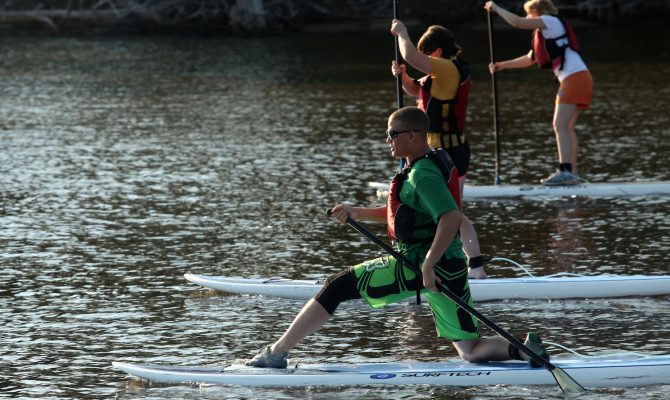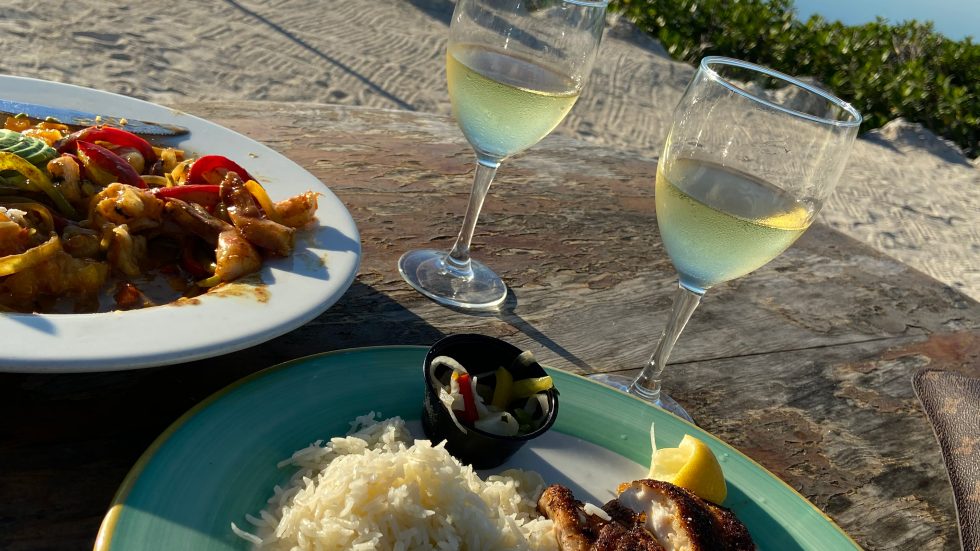When is a paddleboard a boat? According to the Coast Guard, a SUP is considered a “vessel,” so it’s important to understand certain boating responsibilities. Follow all local navigation rules and use common sense when paddling around other vessels that may not be as maneuverable or are restricted by their draft or size. Generally, a paddleboard is more easily able to turn and stop, whereas larger craft take time and distance to stop. Typically, it’s safest to pass astern of other vessels and let them cross in front of you. Try to avoid heavy boat traffic and pick a route away from congestion.
Practice defensive paddling. Defensive paddling is preventing collisions and mishaps in spite of the actions of others around you. Remember that boats travel faster and can leave a wake. Some boats have awkward blind spots that prevent good visibility at certain trim angles, so don’t assume a boater can always see you, especially at dawn or dusk. In narrow channels, stay as far right as possible and avoid crossing busy lanes. If you must cross, do so perpendicular to the lane to get across quickly. If in a group, cross as a compact unit; spreading out in a line like a bunch of baby ducks hinders traffic and increases the chance for a collision.
Don’t leave home without it. A life jacket is the minimum gear, but it only works if you wear it, so don’t leave it strapped to the board. If you’re concerned about comfort, take a look at belt-pack inflatable PFDs or the newest vest designs that offer freedom of movement. Add a whistle; it will always beat yelling at the top of your lungs. Wear bright clothes and avoid paddling at night. If you must paddle at night, you’ll have to show a white light in sufficient time to avoid a collision. A flashlight or headlamp meets this requirement; a glow stick does not. And, finally, a leash is critical in preventing an awkward and potentially dangerous separation from your board.
Learn more about the BoatUS Foundation for Boating Safety and Clean Water at www.boatus.org.




